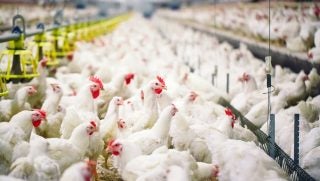We all know someone who frequently mutters, “Back in my day …” or, “Things just aren’t like they used to be.” Perhaps you wish you could live 25, 50, or even 100 years ago. If so, you’re not alone. There can be great value in the ‘simple life’ experience for those of us who enjoy growing our own food or escaping from technology from time to time. However, how often do you hear the phrase, “I wish I could go back and live 400 years ago”? The colonists’ food had many attributes that are trending again today — all their food was local, no synthetic pesticides were used, GMO’s didn’t exist, etc. The major difference was the extreme lack of convenience in their food system. This was even more unfortunate for them than us since time flies when the average lifespan was 40 years! I think a comparison between our current Thanksgiving practices and those of the holiday’s originators show why very few are envious of 17th century lifestyles.
Although many people enjoy the idea of eating local, most still enjoy the option to eat sweet potatoes in the Midwest, or cranberries in the Southern U.S. Two aspects of modern food systems make this possible: shipping and storage. The concept of a jetliner moving food across the country in hours or a magic box that keeps food frozen in a warm house would be more likely to get you burned for witchcraft than praised for innovation around the time of the first Thanksgiving. Luckily for us, refrigerated transportation allows Americans throughout most of the country to buy all of their Thanksgiving favorites.
Speaking of foods that we consider staples of turkey day, many of them wouldn’t have been available centuries ago. Potatoes aren’t recorded in North America before the 1620s, and weren’t popularized until decades later. Dishes such as green bean casserole weren’t even created until the 20th century. Even if you wanted to make a 21st-century Thanksgiving dinner 400 years ago, the likelihood of killing a wild turkey and successfully growing corn, green beans, potatoes, cranberries, sugarcane (or sugarbeets), etc. in the same area would be zero. The massive expansion of our country greatly reduces the likelihood of an entire crop being wiped out in a growing season. We also have the option of receiving food from other countries now since we don’t rely primarily on wooden ships for transportation.
Some foods were more likely to be available back then than others. Dessert is one of the aspects I most look forward to, but early Thanksgivings likely had an underwhelming spread compared to what we’re used to today. Sugar was not easily come by in early America. The upper east coast of the U.S. (where most agree the first Thanksgiving celebrations were held) is not conducive to sugarcane growth, and sugarbeets were not yet grown on the North American continent. Protein, fats, and vitamins were much more important to the settlers, so foods that were more conducive to surviving hard winters and fending off disease were the primary focus.
However, there are records that show they made alcohol despite the struggles of merely surviving. As with food, the amount and availability of alcohol has also increased markedly between the 1600s and today. Needless to say, those who enjoy beer flights, wine tastings, entire plates of dessert, and heaping plates of hot, delicious food would be very disappointed celebrating Thanksgiving in the colonies. I hope anyone with a hot meal this year is thankful for the availability and selection of food today. Happy holidays!
Spartan-state native Michael Swoish is a Michigan State alum who’s currently pursuing his Ph.D. in soil science at Virginia Tech. Michael has taught classes on precision agriculture and has traveled the country to get as much dirt time as possible.



